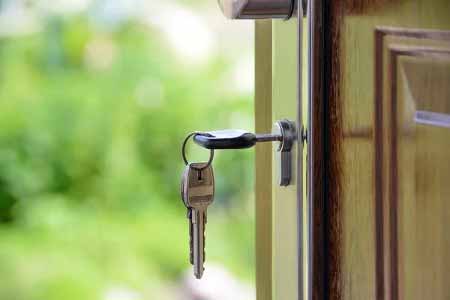Flipping houses can be a very profitable business venture, but it can also be quite risky. To increase your chances of success, it is important to know what you’re doing.
In this blog post, we will give you an inside look at how to successfully flip a house. We will discuss the process from start to finish, and we will provide tips on how to save money and time along the way!
1. Hard money lenders
One of the most important aspects of flipping a house is securing financing. This can be done through traditional banks, or you can work with hard money lenders.
Hard money lenders are private investors who provide short-term loans for fix and flip projects at higher interest rates than those provided by banks.
They often have fewer qualifications and a faster approval process than traditional lenders do, which makes them ideal for first-time flippers.
For example, New Silver loans in Massachusetts offer hard money loans for flipping houses with no upfront fees and with fast approval.
However, it’s important to understand that hard money loans usually come with much more stringent terms and conditions than bank loans. It’s therefore essential to carefully read all contracts before signing to protect yourself from any surprises down the line.
2. Research Properties
Once you’ve secured financing, the next step is to research potential properties. It’s important to look for properties that need only minor repairs and updates, as this will save you time and money in the long run.
You can begin by scouring sites for potential listings. However, it’s also a good idea to drive around your desired neighborhoods yourself so that you can get a feel for the types of homes available in those areas.
This may also help you spot any potential deals that aren’t listed online! It’s also important to consider the location of the properties, as this will affect how quickly you can turn a profit and how much money you’ll ultimately make.
3. Hire a Real Estate Agent
Once you’ve found an ideal property for flipping, it’s time to hire a real estate agent. This is important, as they will provide invaluable advice and guidance throughout the whole process.
A real estate agent can help you negotiate the best possible terms for your purchase, such as getting below the asking price or offering a large down payment to secure the deal.
They can also assist with finding contractors and other professionals who can handle all of the necessary repairs and updates. Working with an experienced real estate agent ensures that everything runs smoothly and that you are always one step ahead of any potential issues.
If you’re new to the world of real estate investing, it might be a good idea to team up with a reputable brokerage like eXp Realty. Their experienced agents can provide valuable guidance and support throughout the flipping process.
4. Create a Budget
Before beginning renovations on your flipped house, it’s essential to create an accurate budget for all materials and labor costs associated with the project. This helps ensure that you stay on track and that you are aware of all expenses ahead of time.
It’s also important to remember that unexpected costs can arise, so it’s best to have extra funds available just in case. Additionally, factor in the cost of permits and other fees associated with flipping a house in your local area.
Make sure you research all details before beginning any renovations so that you don’t run into any surprises along the way!
5. Marketing Your Flipped House
Once all repairs and updates have been completed, it’s time to market your flipped house! This is perhaps one of the most difficult aspects of flipping houses since there is a lot of competition out there.
It’s essential to start marketing your property as early as possible so that you can get the best possible deal. You’ll want to create an online presence for your houses, such as a website or social media accounts, and use it to promote your property.
You can also contact local real estate agents and ask them to list your flipped house on their websites. Additionally, consider hosting an open house to allow potential buyers to view the property in person.
6. Closing the Deal
Once you’ve found a buyer, it’s time to close the deal! This is an exciting step and can mark the end of your flipping journey. It’s important to properly review all documents before signing anything.
Make sure you understand every aspect of the contract, including any contingencies that could affect your profits. Additionally, consider hiring a lawyer or real estate attorney to review all legal documentation so that everything is in order.
Once everything has been signed and agreed upon by both parties, it’s time to cash in on your hard work and enjoy the fruits of your labor!
By taking these steps one at a time and getting professional help when necessary, flipping a house can be a successful and rewarding experience.
Whether you’re just starting or have been flipping houses for years, following this guide will help you navigate the process successfully.
With some hard work and dedication, it’s possible to make a tidy profit while transforming a rundown home into something beautiful! Good luck!



No Comments